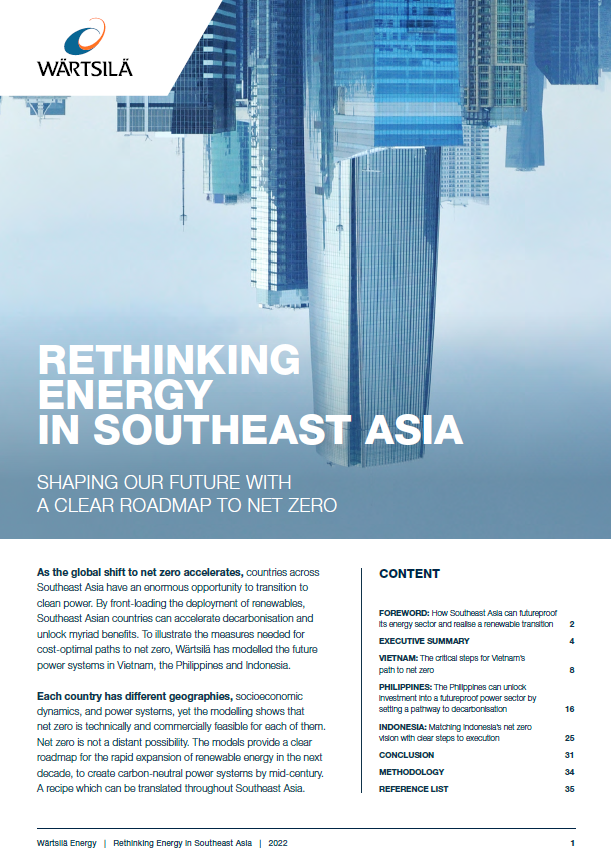

Philippines’ pathway to net zero emissions by 2050
In the Philippines, the journey towards net zero depends on establishing clear commitments and embracing the transition towards flexibility to mitigate climate change.
Actions taken now will determine the long-term path to decarbonisation, and the key question for leaders is whether they will take the opportunity to proactively shape the new market dynamics of the energy transition or be shaped by it.
Our report outlines the steps Philippines needs to take to keep up with an increasingly climate-conscious global community and enable the country to leapfrog to a future-proof power system.
For more regional insights, visit Rethinking Energy in Southeast Asia.
By having clear net zero commitments and acting now, the Philippines can
![]()
Save $6.5 billion USD annually with a net zero power system compared to the Business as Usual scenario.
![]()
Reduce reliance on imported fuel and coal, reduce emissions and avoid curtailment due to inflexible assets.
![]()
Unlock an economically viable path to a net zero power system, pioneering decarbonisation in associated sectors.
The national government has the opportunity to support this shift by setting a clear net zero target, placing itself on a pathway to transition towards renewable energy. Doing so will put it in line with its largest utilities and unlock the economic and environmental benefits of net zero.
Press Release
The Philippines can smoothly transition to net zero by 2050, slashing emissions and carbon tax cost burden by over 20%, according to Wärtsilä
Sep 14, 2022, 04:00 AM by Wärtsilä Corporation
Meet the team

David Kayanan
Financial & Market Analyst, Wärtsilä Energy

Stuti Gandotra
Senior Manager, Market Development, Wärtsilä Energy

Jaana Lager
Power System Analyst, Wärtsilä Energy
